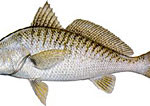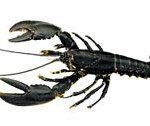
When people talk about coral reefs, fishermen tend to shrug their shoulders and complain about snagged lines and torn nets. But when you talk about groupers, they suddenly sit up and pay attention. Groupers are among the economically most important fishes of the coral reef, because of their popularity as food. Yet without the coral reef there would probably be no groupers. For this reason, groupers are an extremely important indicator species and your record of their existence or non-existence during your dive tells us a lot.
The dusky grouper (Epinephelus marginatus) is solitary and territorial, with a preference for rocky bottoms. It feeds on reef fishes, crabs and octopi and can grow up to 150cm. It has a sturdy, stocky body, with very rounded dorsal and ventral profiles and large head.
The white grouper (Epinephelus aeneus) is found on rocky or muds and bottoms in the southern Mediterranean. It grows to 120cm.
The dogtooth grouper (Epinephelus caninus) is found on sandy mud bottoms, preferring depths in excess of 30m. It can grow up to 157cm.
The orange-spotted grouper (Epinephelus coioides) may be found in the eastern Mediterranean in turbid coastal reefs or brackish waters over mud and rubble. Mature adults reach a length of 120cm.
The goldblotch grouper (Epinephelus costae) feeds on crustaceans, molluscs, and fish and is found on sand, mud or rock bottoms. It grows to 140cm.
Although the haifa grouper (Epinephelus haifensis) is resident within the Mediterranean and inhabits mud, rock or sandy bottoms, its preference for depths in excess of 90m mean that they are unlikely to be seen by recreational divers.
There have been reports of the greasy grouper (Epinephelus tauvina) being seen in the eastern Mediterranean, but this is generally thought to be a misidentification.
Like all indicators, it is valuable if you can record the particular species you sight. However, recording the total number of groupers is just as important.








Social Profiles